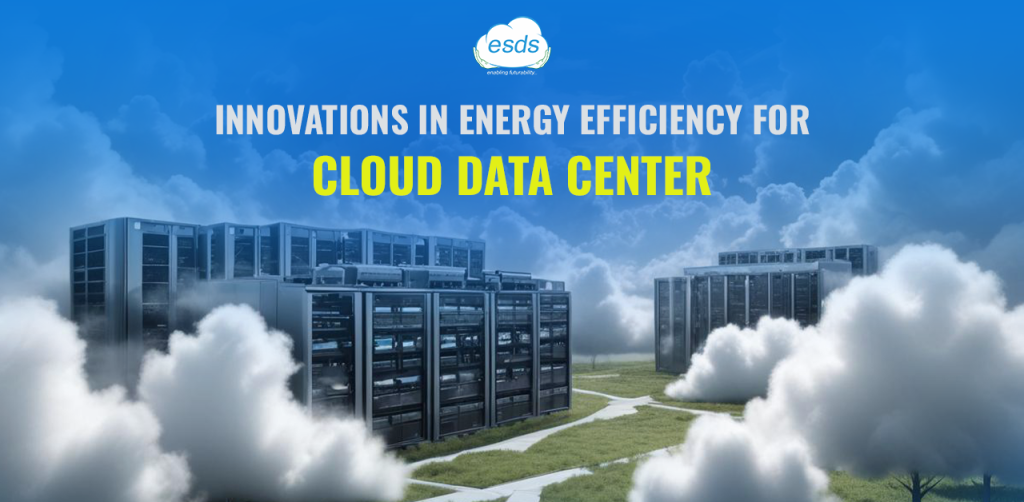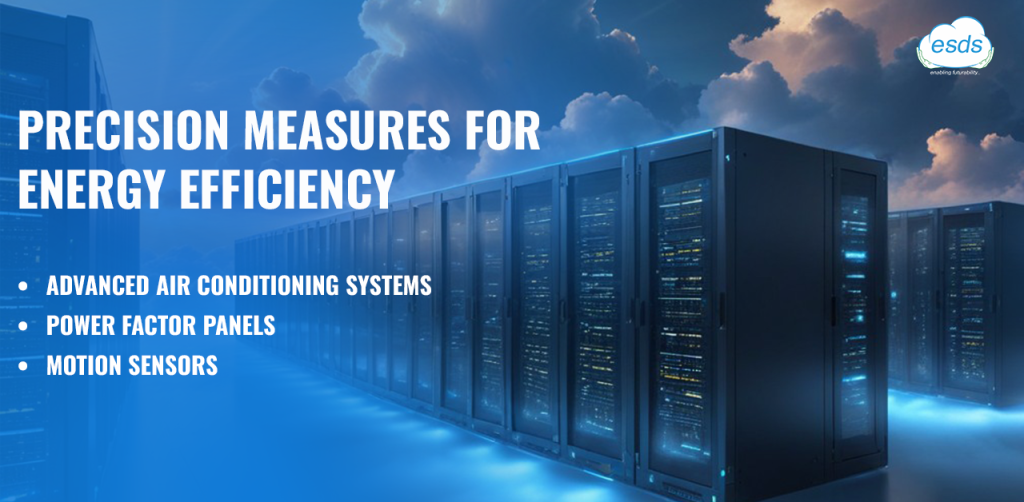Innovations in Energy Efficiency for Cloud Data Centers
Introduction

Undoubtedly, energy efficiency will be a critical enabler of sustainability for cloud data centers a facility forming the backbone of all our digitized infrastructures today. These facilities enable the delivery of anything from streaming services and social media to financial transactions and cloud applications. The more the need for cloud service grows, the more critical it is that the environmental impact of these kinds of facilities decreases.
The article discusses some of the innovations in cloud data center energy efficiency and how breakthrough technologies have made a difference.
The Importance of Energy Efficiency in Cloud Data Centers
These high-energy-consuming data centers maintain servers on and cool to host the world’s digital services. Such data centers have a massive impact on environmental footprints related to global carbon emissions. Energy efficiency in such centers plays a vital role in restraining the ecological footprint and ensuring sustainable growth in the digital economy.
Vertical Scaling Technology
Vertical scaling technology paves the way for servers to operate more efficiently. The prime objective of the vertical scaling approach is to optimize existing servers through the dynamic reallocation of resources according to demands rather than increasing the number of servers to cater to increased loads, as done in the horizontal scaling approach. This ensures that servers are run more efficiently, meaning that less hardware and energy are wasted. Other gains of vertical scaling include:
- Reduced Energy Consumption: Vertical scaling minimizes the energy required to maintain performance by optimizing server resources.
- Enhanced Performance: Dynamic resource allocation ensures servers can handle variable loads more effectively, improving overall system performance.
- Lower Carbon Emissions: With fewer servers needed, the carbon footprint of data centers is significantly reduced.
Precision Measures for Energy Efficiency

Advanced Air Conditioning Systems
Traditional data centers utilize many resources in their cooling systems. Advanced air conditioning systems use the collected data to regulate the cooling as accurately as possible, whereby only the required level of cooling is applied. This reduced the energy level and, thus, the cost of operations. Inbuilt features that can be found in these systems include:
• Variable Speed Drives: Allow fans and compressors to change speed based on the cooling demand.
• Free Cooling: Using outside air when conditions are right to cool the requirements of a building—replacing costly, mechanically cooled energy.
• Hot/Cold Aisle Containment: Separates hot and cold airflows to enhance cooling efficiency.
Power Factor Panels
Power factor panels enhance the effectiveness of electrical installations, as they minimize power loss. They rectify the power factor to make electrical power much more efficient and reduce the general energy required to operate a data center. Main benefits include:
• Reduced Electrical Losses: It enhances the efficiency of electrical power distribution.
• Less energy costs: Decreases the quantity of electricity to achieve the same power.
• Extended Equipment Life: Reduces stress on electrical infrastructure, extending equipment life.
Motion Sensors
Motion sensors may be installed to control lighting and cooling based on occupancy. To ensure that these systems operate only when needed, motion sensors reduce energy consumption, especially in less utilized data center parts. Installations include the following:
• Lighting Control: Lights go off automatically in vacant spaces.
• HVAC controls: Heating, ventilation, and air conditioning controlled by occupancy.
Innovations in Energy Efficiency
- Advanced Cooling Technologies
- Liquid Cooling: Using liquid instead of air to cool servers can significantly improve efficiency. Liquid cooling systems, such as immersion cooling, are more effective at heat transfer and can reduce energy use by up to 50%.
- Free Cooling: Utilizing the natural cooling power of outside air can reduce the need for energy-intensive air conditioning systems.
- AI and Machine Learning
- Dynamic Resource Allocation: AI can optimize the distribution of workloads to ensure servers operate at optimal efficiency, reducing unnecessary power consumption.
- Predictive Maintenance: Machine learning algorithms can predict equipment failures before they happen, allowing for timely maintenance that prevents energy wastage.
- Renewable Energy Integration
- On-site Renewable Energy: Solar panels, wind turbines, and other renewable sources can be integrated into data centers to provide clean energy and reduce reliance on the grid.
- Green Energy Procurement: Data centers can purchase green energy certificates or enter into power purchase agreements (PPAs) to ensure their energy comes from renewable sources.
- Energy-efficient Hardware
- High-efficiency Servers: Modern servers are designed to be more energy-efficient, using less power to perform the same tasks.
- Solid-state Drives (SSDs): SSDs consume less power than traditional hard drives, offering a more energy-efficient storage solution.
- Modular Data Centers
- Scalability and Flexibility: Modular data centers can be scaled up or down based on demand, ensuring efficient use of resources and energy.
Conclusion: ESDS Initiatives in Energy Efficiency
ESDS is a typical example of a company currently topping as much energy efficiency as in sustainable technology. Their new vertical scaling technology helps optimize the use of server resources, achieving an approximate 30% energy saving and substantially reducing electricity consumption and carbon emissions. The firm also resorted to other precision measures: sophisticated air conditioning systems, power factor panels, and motion sensors to save energy consumption in data centers by 20%. In addition to the technological improvement in data centers,
With increased demand for cloud services, data centers are to be made more energy efficient. ESDS and companies like it have made cloud computing eco-friendly through innovative technologies and green practices. The industry embraces such innovations for a greener, sustainable future.
- Why the BFSI Industry Needs GPUaaS Now - October 31, 2025
- The Future of VAPT Services: AI, Bug Bounties, and Beyond - June 20, 2025
- Government Community Cloud: The Backbone of Modern Public Infrastructure - April 7, 2025
